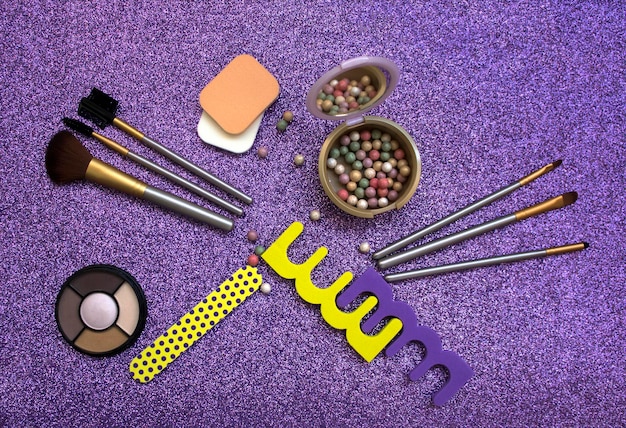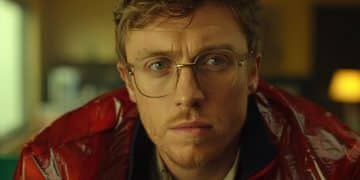The Makeup Magic Behind [Actor’s Name]’s Transformation in [Movie Title]’s Final Scene
![The Makeup Magic Behind [Actor’s Name]’s Transformation in [Movie Title]’s Final Scene](https://endingnew.com/wp-content/uploads/2025/06/endingnew.com_13_1749558887_3983fb61_cover.jpg)
The Makeup Magic That Transformed [Actor’s Name] for the Final Scene of [Movie Title] involved a meticulous process orchestrated by skilled makeup artists, employing various techniques and products to create a powerful and memorable on-screen appearance, perfectly reflecting the character’s emotional and physical state.
Dive into the captivating world of cinematic transformations as we uncover the makeup magic that transformed [Actor’s Name] for the final scene of [Movie Title]. Discover the artistry and techniques behind the stunning look that brought a poignant and unforgettable moment to life.
The Vision Behind the Transformation
The final scene of any movie holds significant weight, often encapsulating the entire narrative’s emotional core. For [Movie Title], the concluding moments required [Actor’s Name] to portray a character undergoing intense emotional and physical change. Makeup played a critical role in visually communicating this transformation to the audience.
Collaborating with the Director
The makeup team worked closely with the director to understand the specific vision for the final scene. This involved discussions on the character’s emotional state, the lighting conditions, and the overall visual tone of the scene.
Understanding the Character’s Arc
Effective makeup design requires a deep understanding of the character’s journey throughout the film. The makeup for the final scene needed to reflect the culmination of this journey, showcasing the impact of the events on the character’s appearance.
- Reflecting Internal Struggles: How makeup amplified the character’s inner turmoil.
- Signifying Physical Changes: Using makeup to depict the character’s worn state.
- Enhancing Emotional Impact: Techniques that heightened the scene’s emotional resonance.
Ultimately, the collaboration between the makeup artists and the director ensured that every detail contributed to the authenticity and emotional impact of the final scene. The intention was not merely to apply makeup, but to express the character’s deepest feelings and experiences visually.
The Makeup Artist’s Toolkit
Transforming an actor effectively requires a comprehensive toolkit filled with various products and specialized equipment. Each item plays a specific role in achieving the desired look, enhancing nuances, and ensuring the makeup holds up under the demanding conditions of filming.
Essential Makeup Products
The foundation of any successful makeup transformation lies in the quality and range of products used. From base layers to color correctors, each product serves a crucial role in creating a flawless canvas and achieving the desired effect.
Special Effects Makeup
For more dramatic transformations, special effects makeup is often necessary. This can include prosthetics, fake blood, and other materials used to create realistic injuries, aging effects, or other visual distortions.

- High-Definition Foundations: Providing flawless coverage for the camera.
- Contouring and Highlighting Kits: Sculpting the face to enhance features.
- Specialized Brushes: Ensuring precise and even application.
The makeup artist also brought advanced tools crucial for creating lifelike effects and guaranteeing that the makeup appears immaculate and lasting. These instruments range from advanced airbrush systems, which permit the implementation of makeup in a consistent, fine mist, to complexion-perfecting primers and environment-resistant setting sprays.
Techniques Used for the Transformation
Achieving a significant makeup transformation requires skillful application techniques. These methods go beyond everyday makeup application, utilizing specialized approaches to create depth, texture, and realism.
The Art of Contouring
Contouring is a technique used to sculpt and define the face by creating shadows and highlights. Strategic contouring can alter the appearance of bone structure, making features appear more prominent or recessed.
Creating Realistic Texture
Texture plays a crucial role in creating believable makeup effects. Whether it’s simulating aged skin, adding subtle imperfections, or creating the appearance of sweat or dirt, texture enhances the realism of the transformation.
The makeup artist uses layering to enhance the appearance of skin depth, replicating natural tones and highlights to yield a tangible, accurate result. Layering entails the vigilant application of makeup goods in slim, translucent strata, guaranteeing every coating mixes harmoniously with the prior one.
Challenges and Solutions
Transforming an actor’s appearance for a final scene can present numerous challenges. These can range from time constraints to maintaining consistency and ensuring the makeup holds up under harsh lighting conditions.
Tight Filming Schedules
Filming schedules are often tight, leaving limited time for makeup application. Makeup artists must work efficiently to complete the transformation without sacrificing quality.
Maintaining Consistency
Maintaining consistency in makeup throughout filming is crucial. Makeup artists must ensure that the makeup looks the same from scene to scene, even under different lighting conditions and filming angles.
![A makeup artist carefully applying makeup to [Actor's Name]'s face on set, with the director and camera crew visible in the background, capturing the behind-the-scenes action.](https://endingnew.com/wp-content/uploads/2025/06/endingnew.com_13_1749558887_3983fb61_internal_2.jpg)
- Time Management: Using efficient techniques to maximize application time.
- Product Longevity: Selecting products that offer long-lasting wear.
- Touch-Up Strategies: Implementing quick touch-up methods to maintain consistency.
The importance of pre-planning and coordination guarantees that the makeup team is completely prepared for any obstacles and capable of accomplishing the desired transformation with the greatest standard of effectiveness and precision. That entails pre-selecting suitable replacements in case of tool fallibility or product inaccessibility, and also anticipating the filming setting and its corresponding consequences toward makeup endurance, like moisture or elevated temperatures.
The Impact on [Actor’s Name]’s Performance
The makeup transformation not only enhances the visual aspect of the character but also significantly influences the actor’s performance. It helps them to fully embody the role, adding depth and authenticity to their portrayal.
Emotional Connection
The physical transformation can help the actor connect more deeply with the character’s emotional state. Seeing themselves in the makeup can trigger emotional responses that enhance their performance.
Physical Embodiment
Makeup can alter the actor’s physical appearance in ways that influence their posture, movement, and overall demeanor. This can add another layer of authenticity to their portrayal.
The makeup also provides the actor assurance and validates the role they are playing. Comprehending that their physical appearance authentically portrays the personality permits them to perform with higher authority and honesty. It enables them toward absolutely immerse in the story and accurately transmit the personality’s nuances, fostering a profound impression among viewers.
Preserving the Makeup Legacy
The artistry behind makeup transformations extends beyond the set. Documenting the process and preserving the techniques ensures that these valuable skills and creative approaches are passed on to future generations.
Behind-the-Scenes Documentation
Documenting the makeup process through photos, videos, and detailed notes provides a valuable resource for future makeup artists and filmmakers. It captures the evolution of the transformation and the techniques used to achieve it.
Sharing Knowledge and Skills
Experienced makeup artists often share their knowledge and skills through workshops, tutorials, and mentorship programs. This ensures that the art of makeup transformation continues to evolve and thrive.
- Archiving Techniques: Creating a digital library of makeup processes.
- Educational Programs: Incorporating makeup transformation into film school curriculum.
- Mentorship Opportunities: Pairing experienced artists with aspiring professionals.
The dedication to protecting makeup legacy ensures that the creativity and effort that goes into every transformation are valued and remembered. By sustaining these abilities and expertise, the motion picture sector may carry on enthralling people with amazing visual stories, one face at a time.
| Key Point | Brief Description |
|---|---|
| 🎨 Collaboration | Director and makeup artist work together. |
| 🛠️ Toolkit | Essential makeup and special effects. |
| ⏱️ Challenges | Tight schedules and consistency are key. |
| 🎭 Performance | Makeup enhances emotional and physical roles. |
Frequently Asked Questions
▼
The initial step is a detailed consultation with the director and actor to understand the character’s arc and the desired visual impact. This ensures the makeup aligns with the narrative’s goals.
▼
Maintaining consistency involves detailed notes, photos, and videos of each makeup application. Products are carefully recorded, and techniques are meticulously followed to replicate the look each day.
▼
Lighting significantly affects how makeup appears on camera. Makeup artists must adjust their techniques and product choices to suit the specific lighting conditions of each scene for optimal results.
▼
Common challenges include tight schedules, maintaining makeup in various weather conditions, and addressing unexpected skin reactions. Adaptability and quick problem-solving skills are crucial.
▼
Makeup can deeply influence an actor’s emotional connection to the character. The physical transformation helps them embody the role more fully, adding depth and authenticity to their performance on screen.
Conclusion
The transformative power of makeup in the final scene of [Movie Title] illustrates the incredible artistry and skill involved in cinematic storytelling. By understanding the character’s journey, collaborating closely with the director, and employing advanced techniques, the makeup team created a visual masterpiece that elevated [Actor’s Name]’s performance and left a lasting impression on audiences.

![Unveiling the Secrets: Costume Design in [Show Title]'s Finale Unveiling the Secrets: Costume Design in [Show Title]'s Finale - Cover Image](https://endingnew.com/wp-content/uploads/2025/06/endingnew.com_13_1749558836_c21c77d2_cover-360x180.jpg)


![The Music Behind the Magic: Unpacking the [Movie Title] Score The Music Behind the Magic: Unpacking the [Movie Title] Score - Cover Image](https://endingnew.com/wp-content/uploads/2025/06/endingnew.com_13_1749558769_5379e62d_cover-360x180.jpg)
![Special Effects Secrets: Making [Movie Title] Magic for Under $50K Special Effects Secrets: Making [Movie Title] Magic for Under $50K - Cover Image](https://endingnew.com/wp-content/uploads/2025/06/endingnew.com_13_1749558769_a0223f59_cover-360x180.jpg)